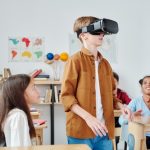
5 Ways Virtual Reality Enhances Learning
March 14, 2023
Not so long ago, Virtual Reality (VR) is something one can only see on the big screen — a concept made popular by sci-fi movies. These days, however, they are far from just being works of fiction. As technology continues to advance, the past few years have also seen VR becoming more mainstream.
Initially, VR was introduced as a powerful tool to enhance the experience of those involved in the gaming industry. Over time, however, as more people saw its potential, more industries have delved into exploring its many possibilities. Thanks to the “life-like” experiences that the technology offers, more industries have started to incorporate it into their respective processes.
The field of education is no exception. The emergence of smart VR schools in recent years showcases the many ways that VR technology can be incorporated into the learning setting. With the immersive experience it offers, VR is making learning more fun, involved, and interesting. Many institutions are even starting to recognize the many benefits VR can offer for students with disabilities. Read on as we will explore the many ways VR is making waves in education.
Practical and risk-free training
VR is known for its simulated environments. In the traditional classroom setup, students are often taught various concepts and theories, followed by practical activities to allow students to apply what they have just learned. Unfortunately, there are limitations to this in the usual school setting, particularly in the available resources to execute such training. As such, students are only likely to practice what they’ve learned a few times considering the constraints involved.

With VR however, it is more than possible for students to practice what they’ve learned in a virtual simulation as many times as they need to. VR simulations also provide students with a safe and secure setting where they can practice any unfamiliar skills without having to worry about getting injured or causing injury to others. It’s no surprise how the technology is utilized by certain industries as a useful tool for hazardous work training. This risk-free environment in a VR simulation allows students to polish their skills because they can afford to make mistakes and ultimately, learn from them.
Remote learning and accessibility
Thanks to the internet, the world these days is becoming a much smaller place. Connecting with people from across the world is more than possible. VR technology only enhances that. Through internet connectivity, VR makes it possible for students to learn no matter where they are. Students can even learn right from their homes and still experience the full classroom treatment through virtual reality. As such, VR is becoming a fantastic tool for homeschooling.
VR also promotes accessibility for learning. It doesn’t matter where you are in the world, the simulation offered by the VR technology remains the same wherever you are accessing it from. When barriers like distance are broken down, there is no stopping anybody who wants to learn. With this, VR can be used as a tool to equalize opportunities for education and learning. With its current trajectory, the technology is on the right track to transform education and introduce a less conventional approach to teaching.
Medical training and simulations
Another area that is greatly benefitting from the use of VR in education is medical training. Many hospitals and medical colleges are putting more effort into investing in VR technology for medical programs and incorporating it into their learning processes. Medical students need to hone their skills in how to handle a variety of scenarios from simple surgeries to complex operations. The immersive and interactive world of VR is the perfect platform to ensure that this is exactly what they are getting.
In traditional training settings, students cannot afford to make errors, especially when a patient’s life is on the line. With a VR simulation, however, students are free to explore every single possibility out of every scenario. They can afford to make mistakes along the way. By being able to perfect their skills through trial and error, medical students will feel more confident that by the time they graduate, they are equipped with critical practical skills to make a difference once they start interacting with real-life patients.

Virtual field trips
Perhaps one of the most popular applications of VR in the education sector, virtual tours, and field trips make it possible for learners to go to places that would otherwise be physically impossible for them. Field trips are crucial in the learning process as they reinforce what students have learned in the classroom. However, the recent pandemic has made educators realize how it is not always possible to facilitate in-person tours and trips for students.
When students are unable to step out of their homes or classrooms, VR can be used as an alternative learning tool instead. With just a VR headset, students can travel to places all over the world and even experience and immerse themselves in the cultures and traditions of these places — all without having the need to go anywhere. From doing a virtual tour of the Louvre, climbing up the Eiffel Tower, exploring the Sahara desert, or even taking a trip to space, nothing is virtually impossible with VR.
Inclusivity for students with disabilities and special needs
Students with special needs and learning disabilities will never be able to learn the conventional way. The usual medium of instruction and the use of textbooks and worksheets are never going to be as effective for them as they would be for regular students. The use of VR in special education, however, is a different story.
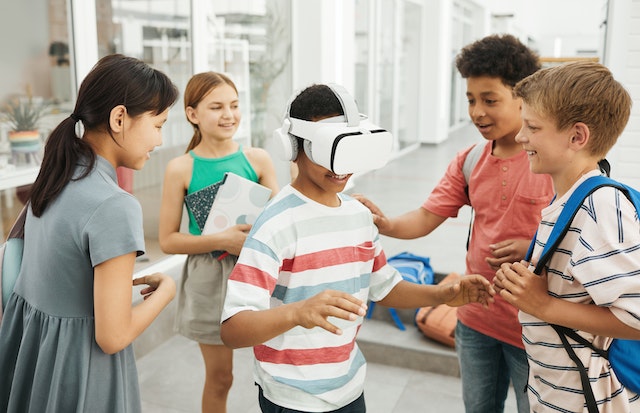
With VR, it is possible to work past a student’s disability and allow them to discover the joys of learning. Special needs students always learn at a different pace from their classmates in a traditional classroom setting. However, with VR technology, their learning deficiencies no longer have to hamper their education. Teachers can utilize VR technology in creating simulations that are tailored-fit to a student’s specific capacity, interests, and learning needs. When students with disabilities no longer have to be pressured to keep up with the rest of the class, they will discover a new appreciation for learning that is not possible with the conventional way of teaching.
Technology harnessed right
The many strides that VR is making in various industries and most notably, in education, is further proof that when harnessed right, technology can be a force for good. While it is true that research to quantify the many benefits of the technology in this sector is still few and far between, it is also undeniable that it has the potential to transform education in the most positive ways possible. As technology continues to evolve and more advancements are introduced in the field, it is not surprising to see how the rest of the world has shifted its gaze to VR for the possibilities it can pave the way for.
Technology in learning can be a great equalizer. In learning settings involving students with disabilities and special needs, technology can help bridge the gap to ensure that nobody gets left behind. This is where virtual reality (VR) technology can make a huge difference. With such a tool at their disposal, teachers will be able to tailor-fit their instructions and lessons based on the learning needs and capacity of the students. As a result, they can empower students with special needs and make them interested and motivated to learn.
Many educators are often faced with the challenge of how to include special needs students in the many classroom activities. When students are struggling with certain subjects, however, keeping up with these activities can be very challenging. Technologies like VR make it possible for educators to differentiate which students need an extra helping hand in the classroom. With the tool at hand, it is possible to make slight tweaks and changes to assignments to ensure that they are well within what the students can grasp. When used effectively, digital technology can boost engagement in classrooms.
Making use of assistive technology
In traditional learning settings, educators will often rely on the use of worksheets and textbooks as the main medium of instruction. While this may work in classrooms when every student is at the same level of learning capacity, this can be a different story in learning settings where there are students with disabilities. Oftentimes, this teaching method will be unsuccessful, causing the special needs students to get left behind as a result.
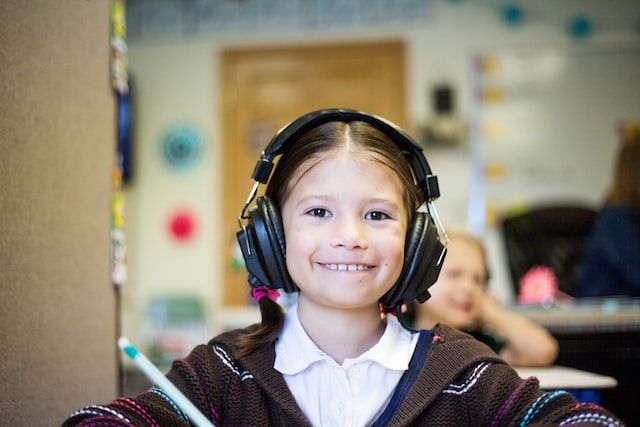
In recent years, many educators have employed the use of assistive technology to augment learning settings where students with disabilities are present. This involves the use of a variety of tools from computer software and communications tools to tablets and VR. In learning settings where students with disabilities are present, VR technology has the potential to make a huge difference. It is especially useful for students with learning disabilities, behavioral disorders, sensory impairment, severe cognitive disabilities, and attention deficit disorder.
Breaking down the physical obstacles
Oftentimes, kids with physical disabilities are limited when it comes to what they can do and participate in when in class settings. However, with VR, it is more than possible for them to engage in other activities they would never be able to in traditional learning settings. There is no limit to what one can do in the virtual world. So, even physical limitations such as being in a wheelchair cannot hold back students from experiencing things they would not be able to in the physical world.
In classroom settings, physical limitations can make it challenging for students to grasp certain ideas and concepts being introduced in the classroom. Through the virtual environment, however, there is a way for them to access learning opportunities that would otherwise be out of their reach. Through the simulated world of VR, students can experience virtually anything from swimming to surfing to skiing to anything that the technology can simulate. And that can be a very empowering experience.
Support for students with special needs
VR can offer special needs students the support they need to boost their motivation to learn more. Oftentimes, it can be disheartening to continue learning when you are limited by so many things and you’re learning at a significantly lower pace than the rest of the class. With VR, students with special needs can enjoy the full advantage that the VR learning setting can offer.
Through simulated lessons, they will discover that learning is more fun when they do not have to be limited by their disabilities. For kids with special needs that are experiencing some challenges with their communication skills, the interaction they can learn through the VR world can be a game-changer. This is especially useful for kids with hearing issues and special needs. Educators may even be able to promote social contact through a VR headset when teaching kids on the spectrum.
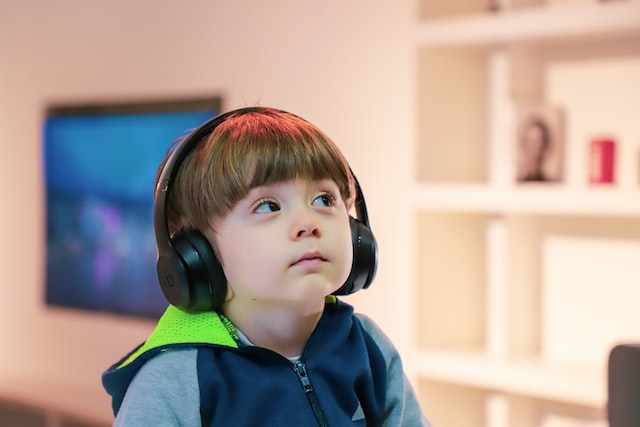
Learning in a secure setting
It’s quite common for students with special needs and disabilities to find it challenging in social settings and the classroom is no exemption. Because of their limitations, many might feel awkward inside the classroom setting. Some students with disabilities would often withdraw to a corner as their physical limitations already make them feel isolated from the rest of the class.
With VR, students who are mentally or physically challenged will be able to learn in a setting that is secure, safe, and relaxed. The simulated world of virtual reality offers them a safe zone where they do not have to feel awkward about their disabilities. When students can learn in such an environment, they will feel more motivated as learning is now associated with a positive experience instead of the usually awkward encounters they are used to.
Promoting independent learning
VR is known for its experiential and immersive learning experience. When students can interact with the concepts, lessons, and theories being presented, they can have a better grasp of what is being taught. When kids are no longer reliant on a teacher to facilitate instruction, they get to learn at their own pace. This does away with the pressure to keep up with everybody else.
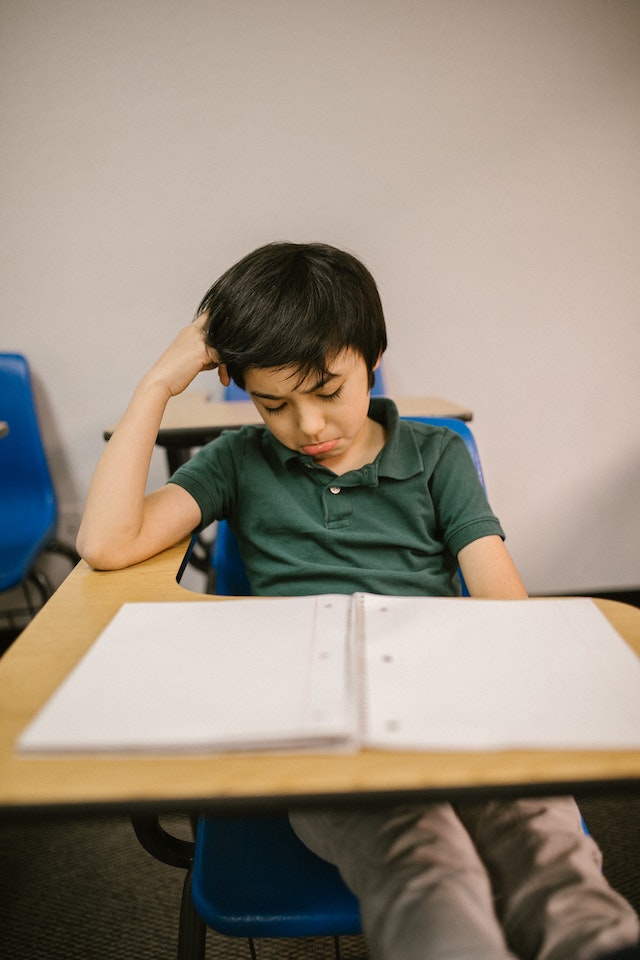
When every student can’t perform the same activities, VR can be used to provide students with different activities based on their capabilities. What’s even better is that this can be done discreetly, so students won’t have to feel embarrassed about doing something different from the rest of the class. VR allows them to do that without having to feel embarrassed about it.
In the VR setting, learners will have more freedom to take up lessons at a pace they are more comfortable with — something that is very necessary for students with disabilities. The fact that one can also just revisit lessons and subjects at any time means they can take their time to go over concepts that they have not wholly grasped the first time as many times as they need to. Some special needs students may require revisiting topics more than a few times to fully grasp a lesson. It is also for these reasons that VR is transforming homeschooling.
A promising development
With VR in schools, students with special needs can benefit from progressive learning techniques that are conducive to their capabilities and takes into consideration their limitations. Virtual reality makes it possible for students to go beyond the limitations of their four-walled learning environment. Whether they want to explore the Eiffel Tower, visit the pyramids, learn what happened on D-Day, or even visit space, it is possible with VR. For students who have always been grounded by their physical and mental limitations, this is an empowering experience. VR in special education is a step in the right direction. As the technology progresses and evolves, it is only a matter of time before it becomes the norm in any learning setting.